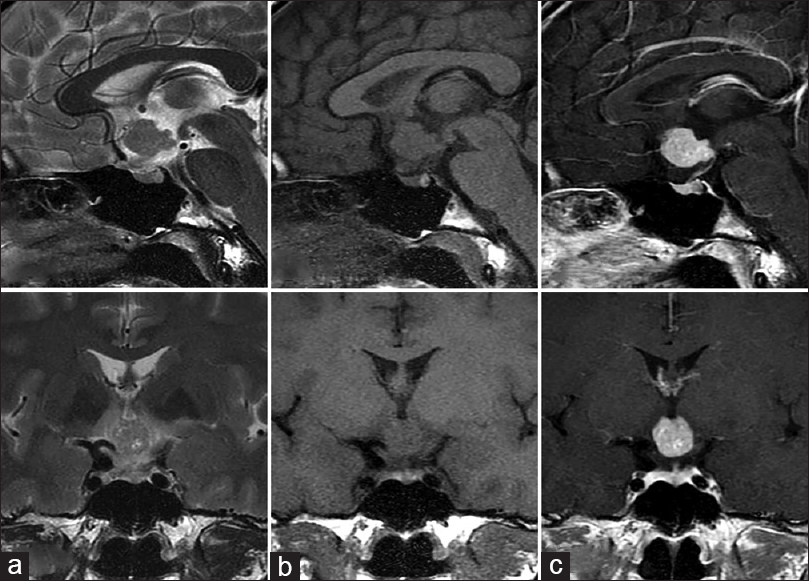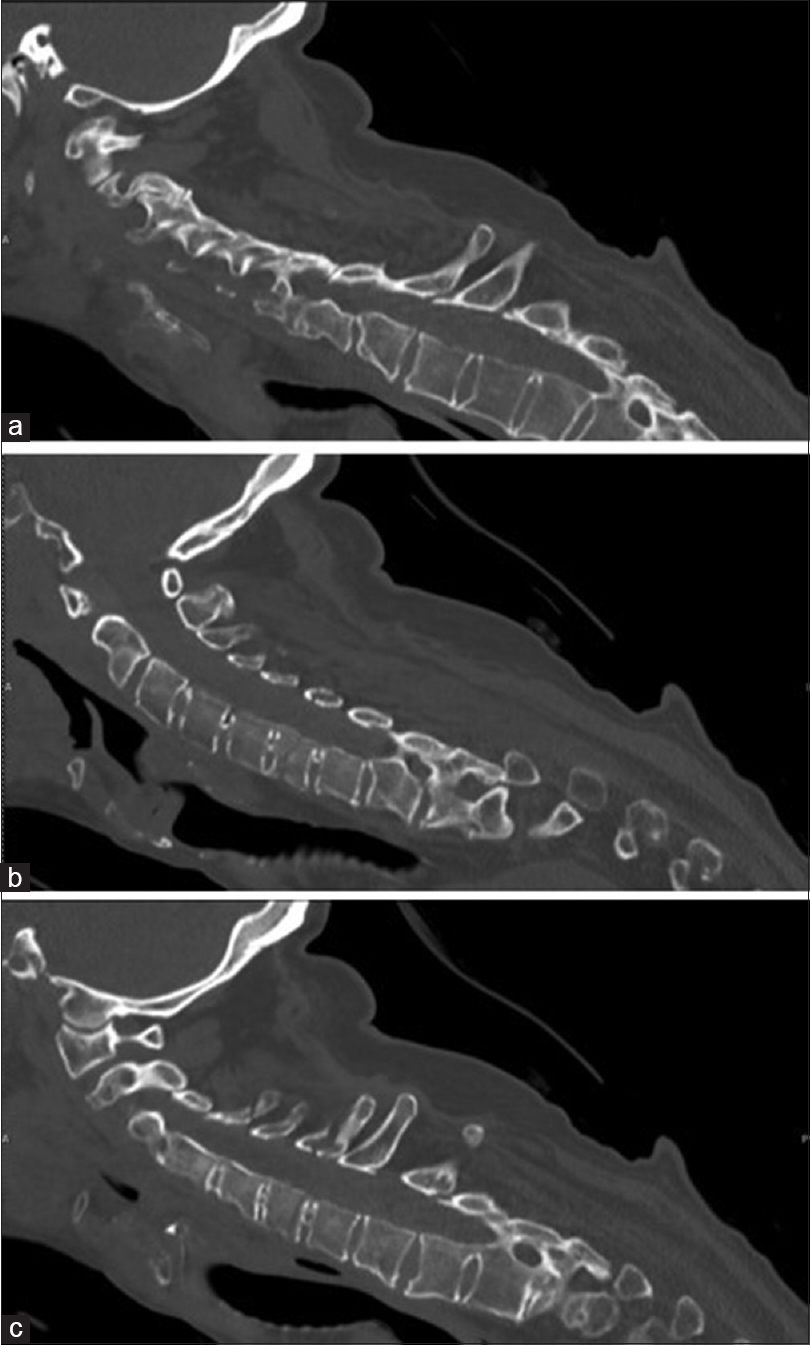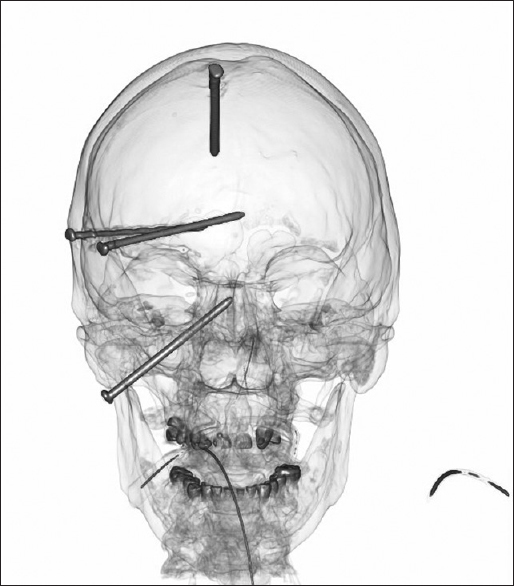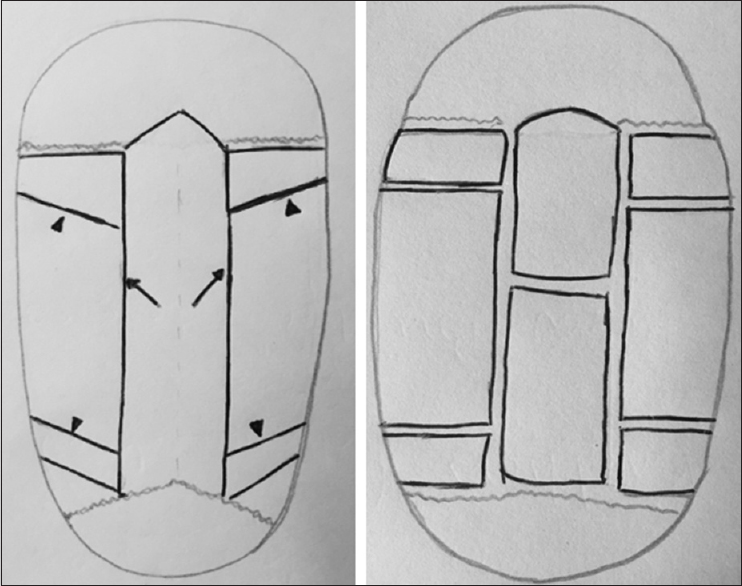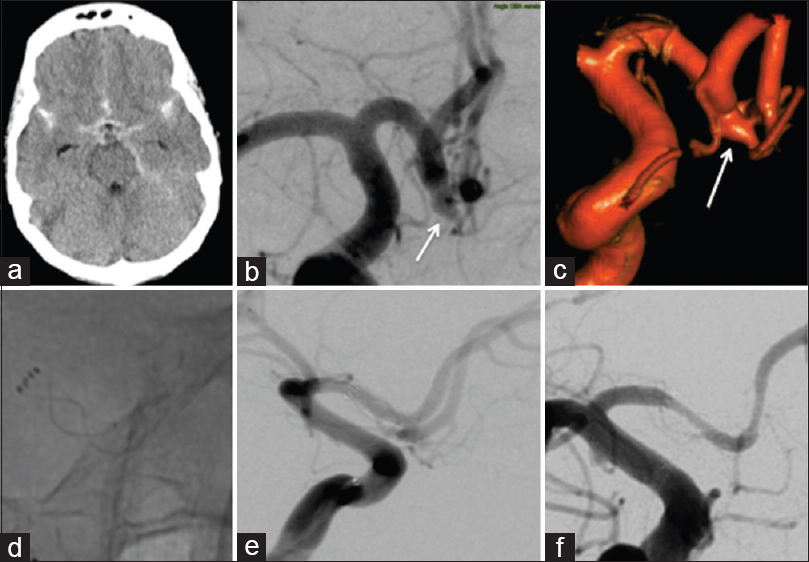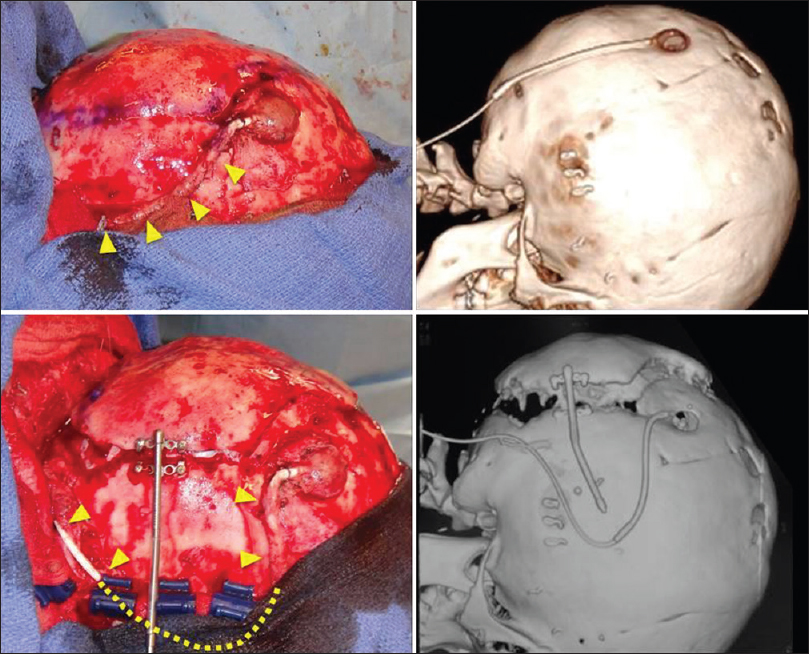Usefulness of neuroimaging and immunohistochemical study for accurate diagnosis of chordoid glioma of the third ventricle: A case report and review of the literature
Date of publication: 02-Nov-2018
Background:Chordoid glioma of the third ventricle is a rare neuroepithelial tumor characterized by a unique histomorphology within the third ventricular region, but with radiological and histopathological features mimicking benign lesions such as meningioma. We report a case of chordoid glioma of the third ventricle and suggest a useful indicator for accurate diagnosis.
Lateral position and utility of navigation for posterior fixation of unstable cervical fracture with ankylosing spondylitis
Date of publication: 02-Nov-2018
Background:Ankylosing spondylitis (AS) is a seronegative spondyloarthropathy within the spectrum of rheumatologic diseases. The systemic inflammation that characterizes AS leads to bone resorption and reformation. Pathologic remodeling may include kyphosis, osteoporosis, and multi-segment auto-fusion. Cervical fractures account for 53–78% of spinal trauma seen with AS. Surgical planning is often challenging owing to spinal deformity, medical comorbidities, the cervicothoracic foci of injury, and gross instability of these fracture.
Indirect revascularization for moyamoya disease: A pediatric neuroanesthesiology perspective
Date of publication: 02-Nov-2018
Thoracic spine dislocation in Gorham–Stout Syndrome: Case report and literature review
Date of publication: 01-Nov-2018
Background:The Gorham–Stout syndrome (GSS), also known as phantom bone disease, is a rare bone condition of unknown etiology. Involvement of the spine is described in <50 cases in the literature. Here, we report a case of thoracic spine fracture dislocation in a young female who was known to have GSS.
Delayed diagnosis of post-traumatic aneurysm of distal anterior cerebral artery
Date of publication: 01-Nov-2018
Background:Traumatic intracranial aneurysms (TICA) are often associated with poor prognosis and should be diagnosed as soon as possible to prevent delayed intracranial hemorrhage and high rates of morbidity/mortality related to bleeding. Diagnosis requires a high index of suspicion. The goal of treatment is to exclude the aneurysm issue with surgical or endovascular methods.
A case of multiple nail gun injuries to the head and one to the heart
Date of publication: 01-Nov-2018
Background:Nail gun injuries, while uncommon, can present significant treatment challenges. Many are often caused by work-related accidents, they have also been seen in suicide attempts and assaults.
Combination of the tubular retractor and brain spatulas provides an adequate operative field in surgery for deep-seated lesions: Case series and technical note
Date of publication: 01-Nov-2018
Background:Surgeries for deep-seated lesions are challenging because making a corridor and observing the interface between lesions and normal brain tissue are difficult. The ViewSite Brain Access System, which is a clear plastic tubular retractor system, is used for resection of deep-seated lesions. However, the tapered shape of this system may result in limitation of the surgical field and cause brain injury to observe the interface between lesions and normal tissue. In this study, we evaluated the usefulness of the combination of ViewSite and brain spatulas.
Impact of extra-axial cerebrospinal fluid collection in frontal morphology after surgical treatment of scaphocephaly
Date of publication: 30-Oct-2018
Background:Infants with sagittal suture synostosis often present a pathologic dilatation of subarachnoid spaces. The impact of such subarachnoid spaces’ enlargement in the morphology of the skull, especially on the forehead and on the surgical outcome, was analyzed.
The use of flow diverters to treat small (≤5 mm) ruptured, saccular aneurysms
Date of publication: 30-Oct-2018
Background:There is limited published literature on the use of flow diverting stents (FDS) to treat ruptured intracranial aneurysms in the acute stage. We present our experience of using FDS to treat small (≤5 mm) ruptured aneurysms.
Results and limits of posterior cranial vault expansion by osteotomy and internal distractors
Date of publication: 30-Oct-2018
Background:Expanding the posterior cranial vault has become a common procedure in the treatment of complex craniosynostosis. Several techniques are available to remodel the posterior vault. Aim of this study was to analyze the posterior vault distraction osteogenesis.


